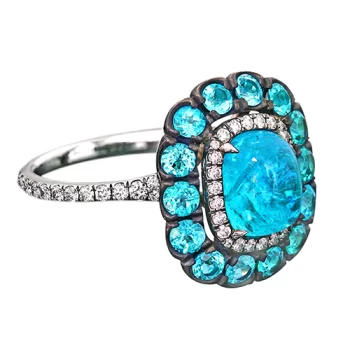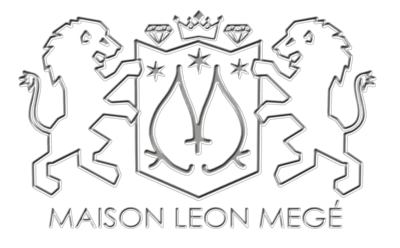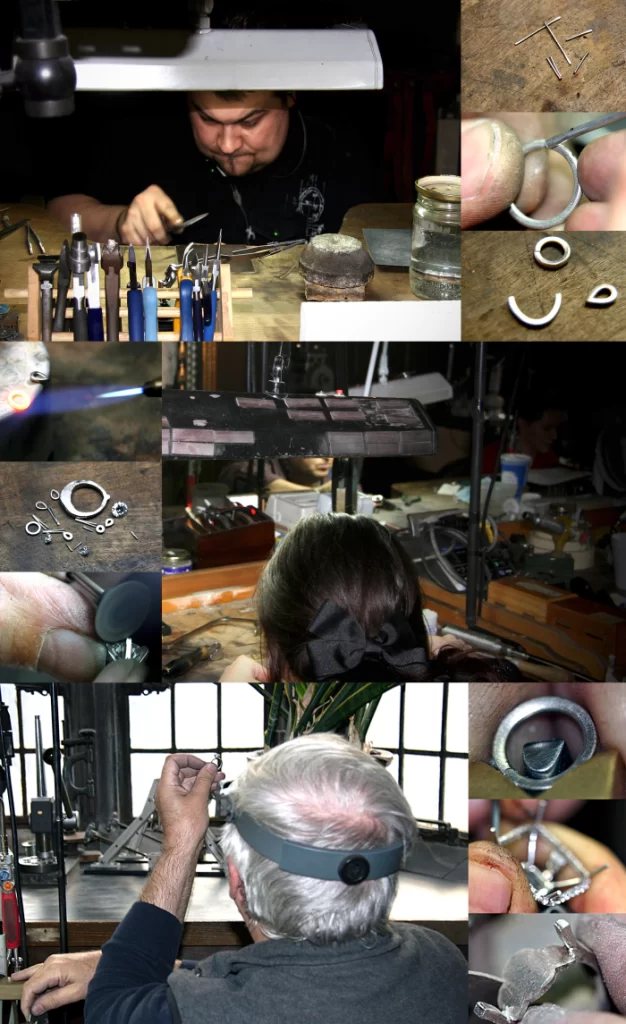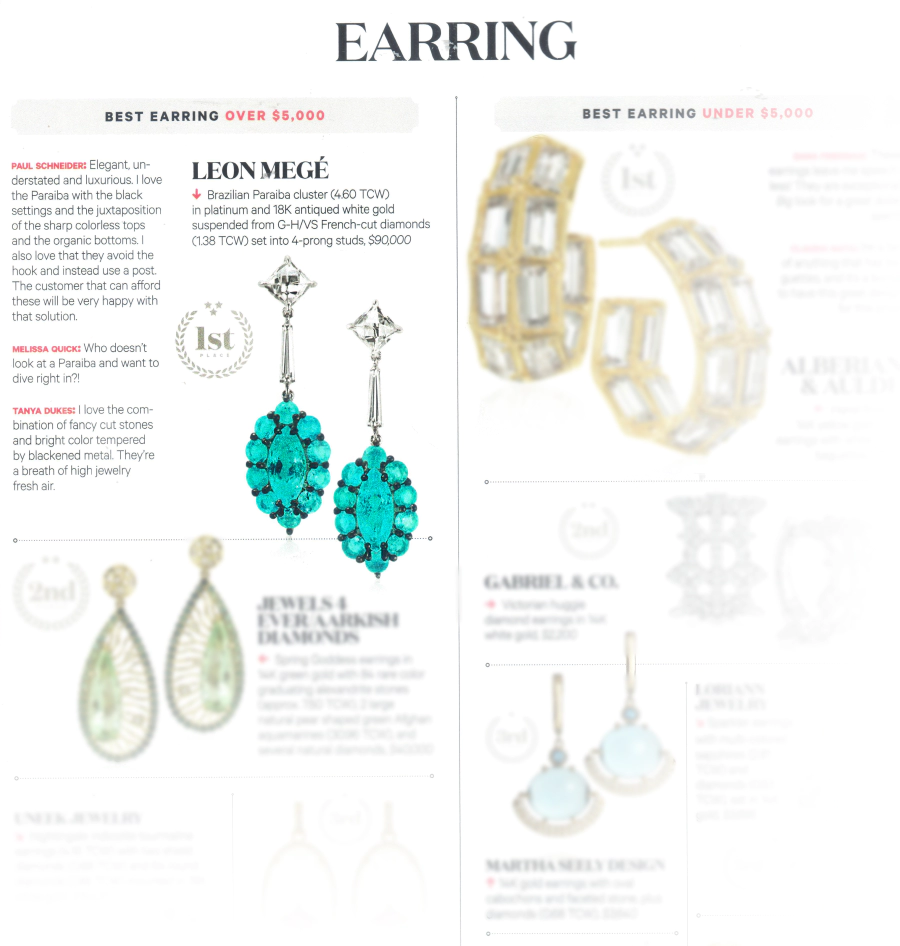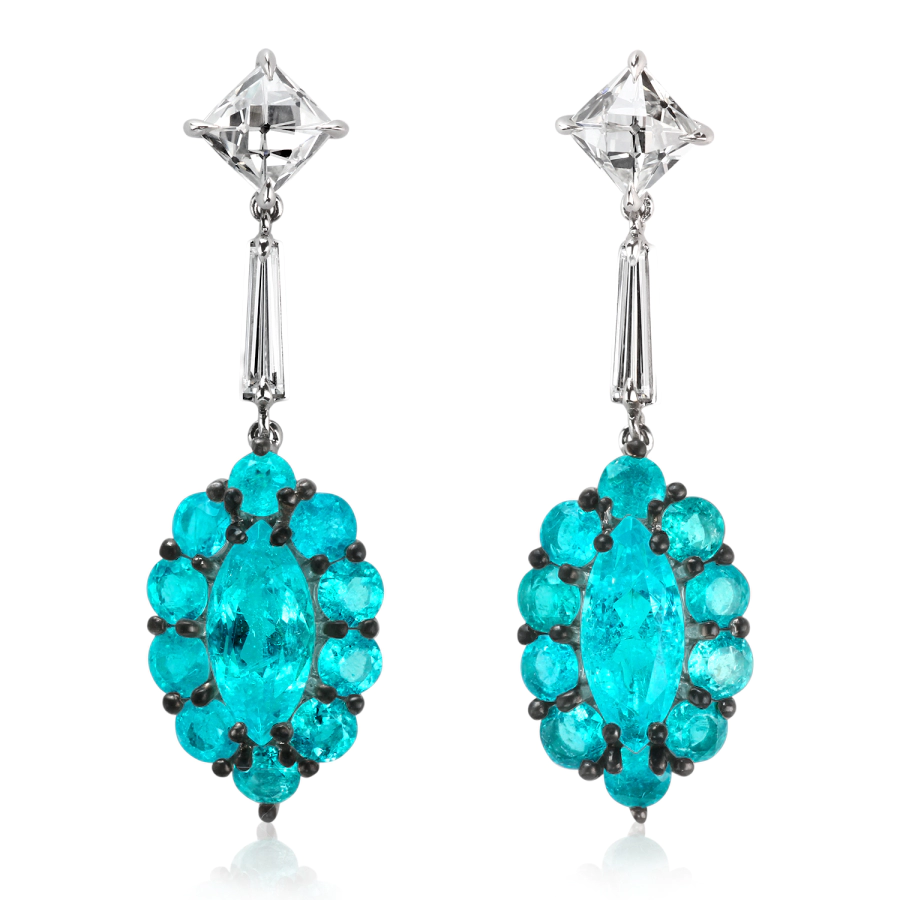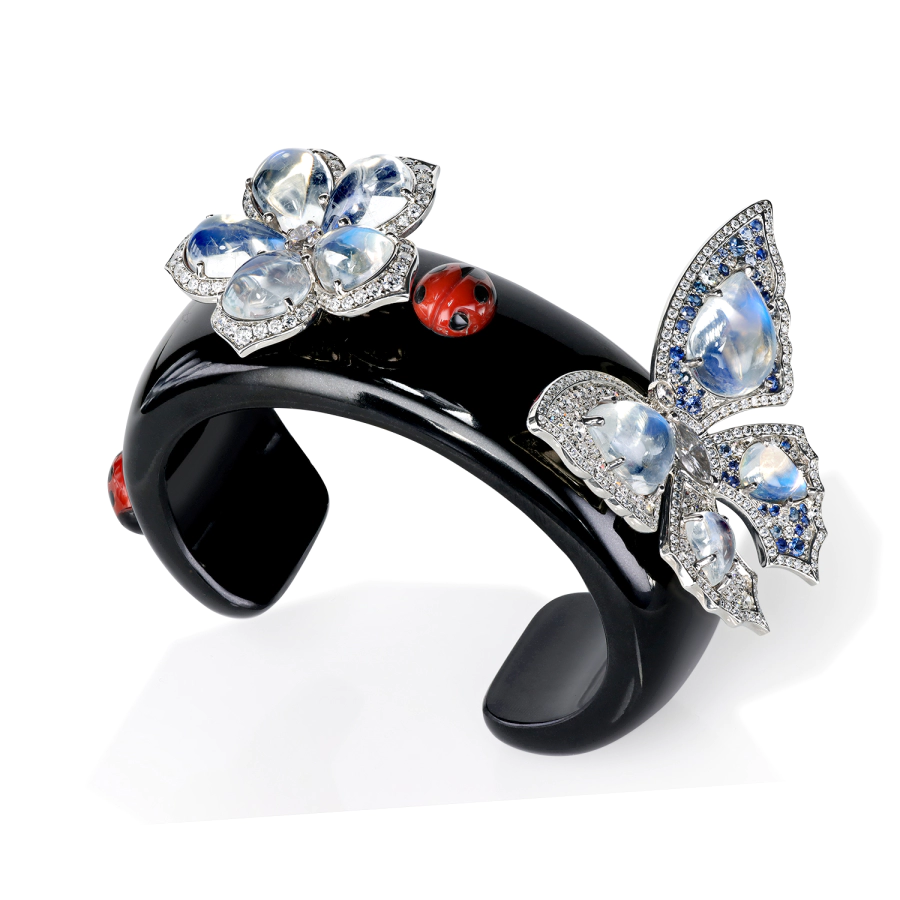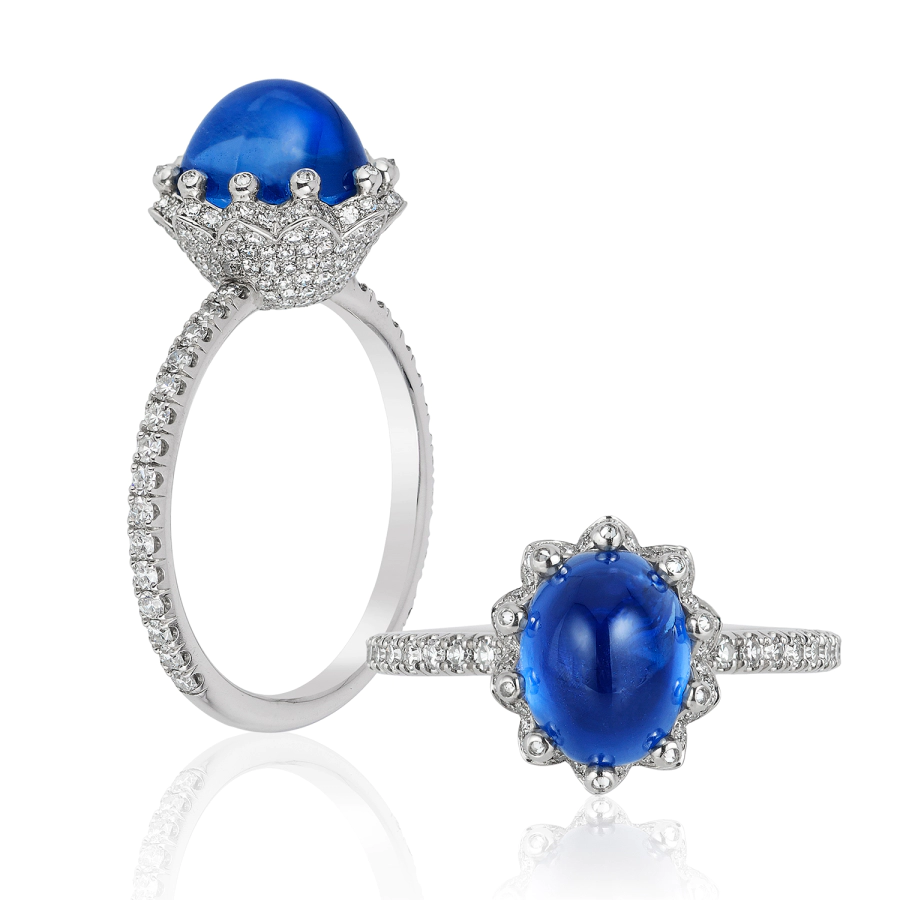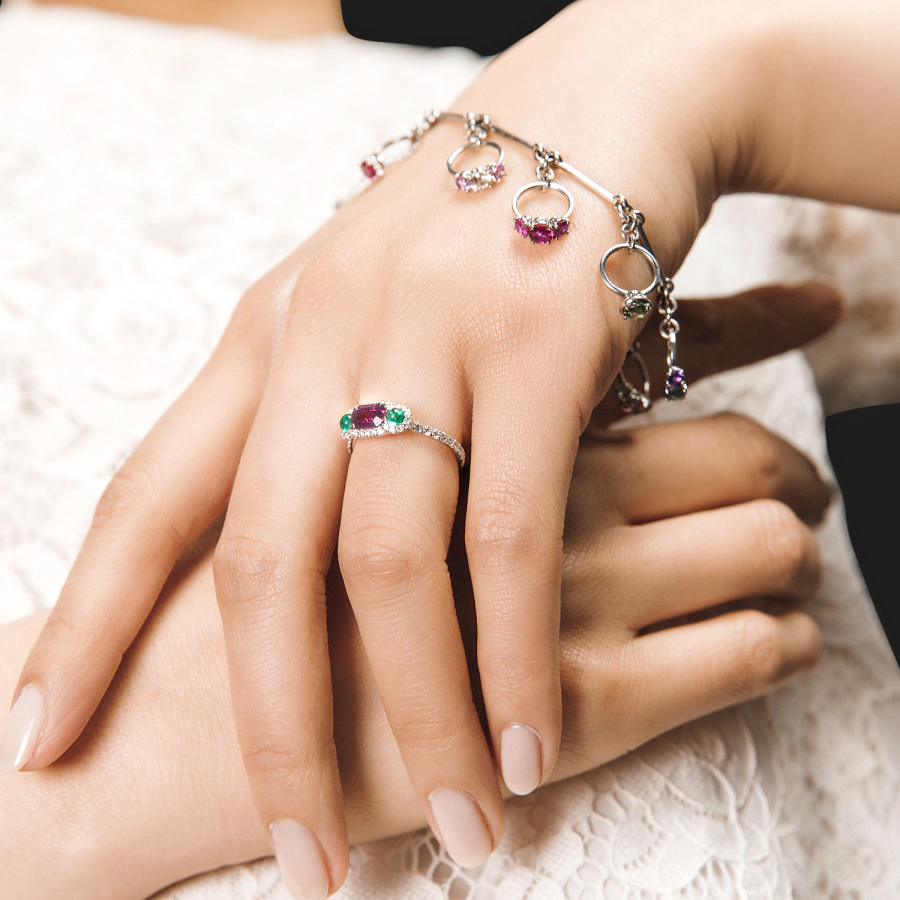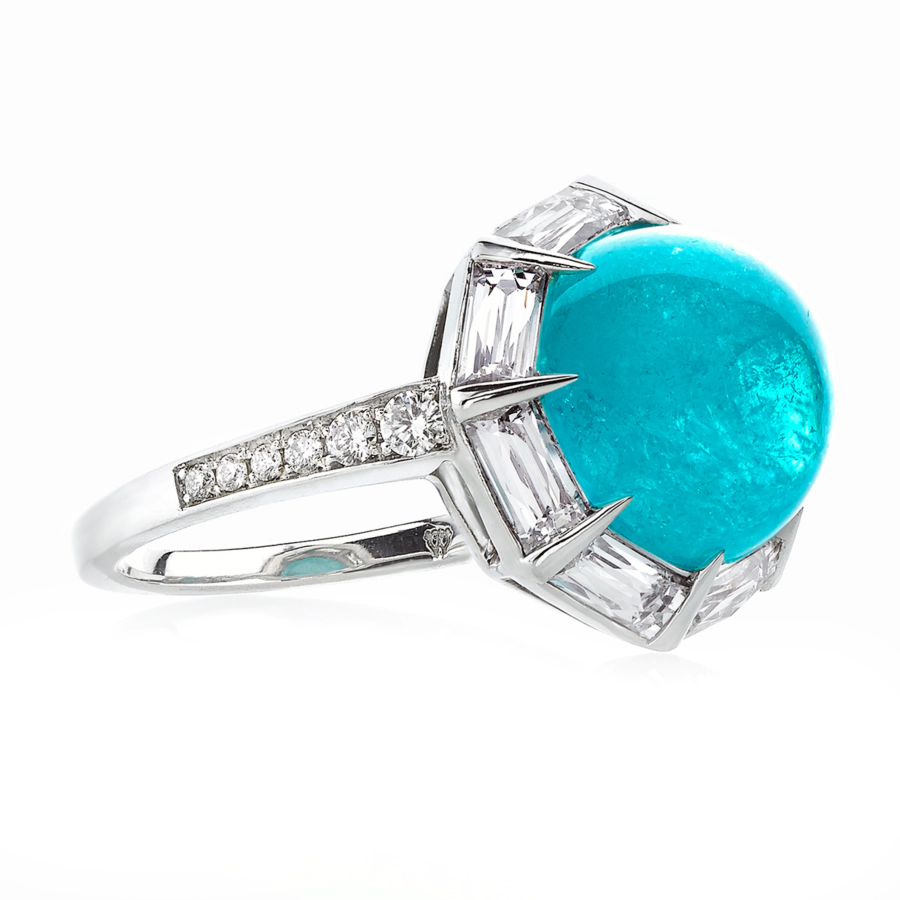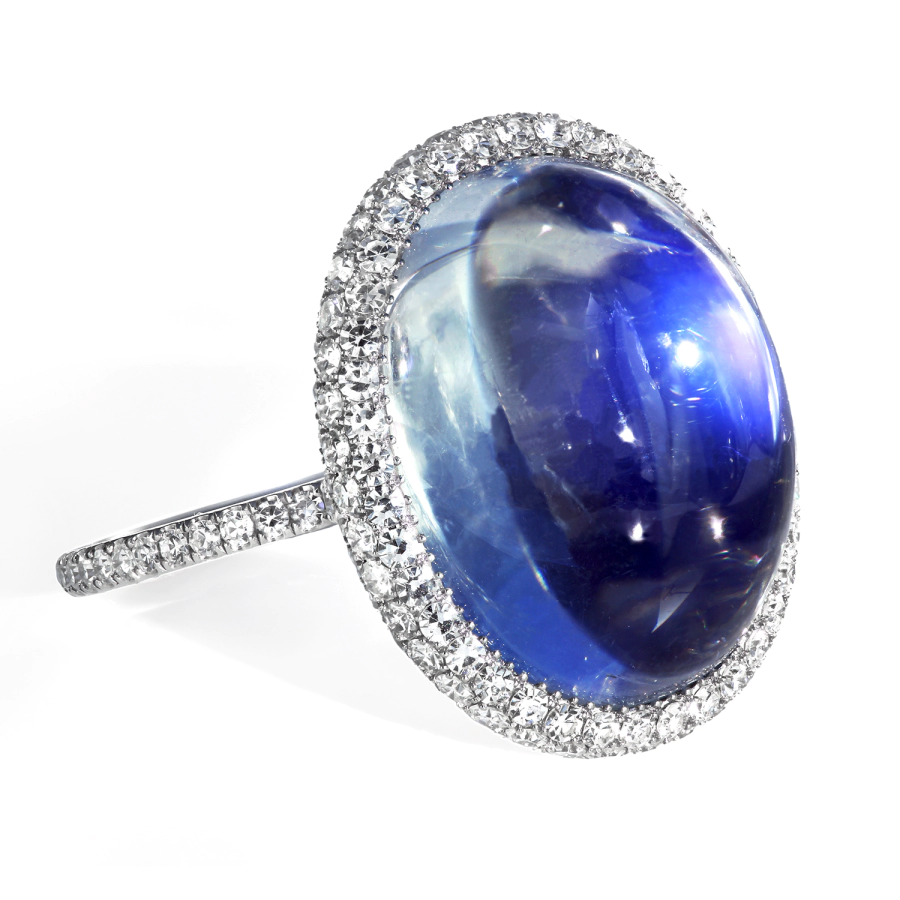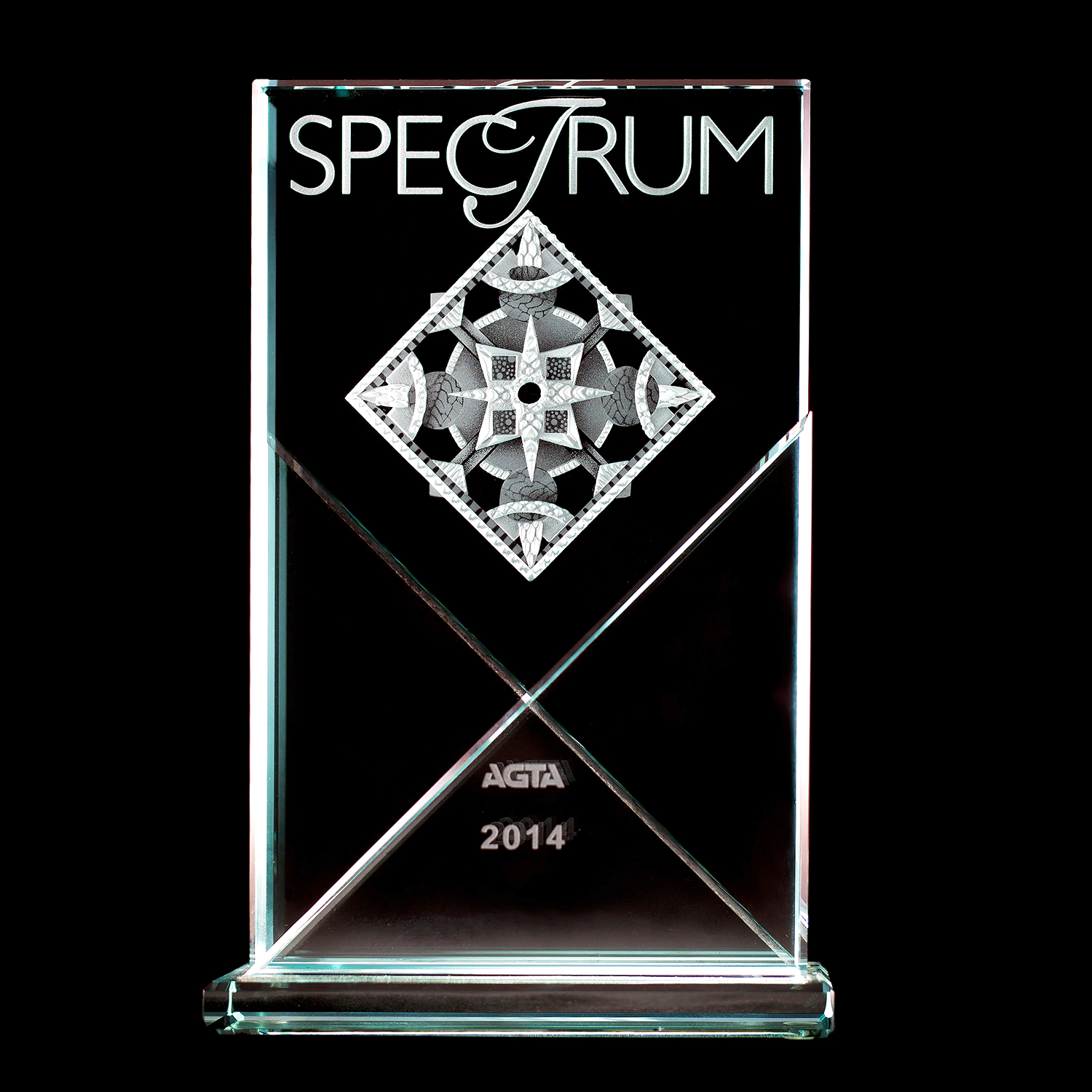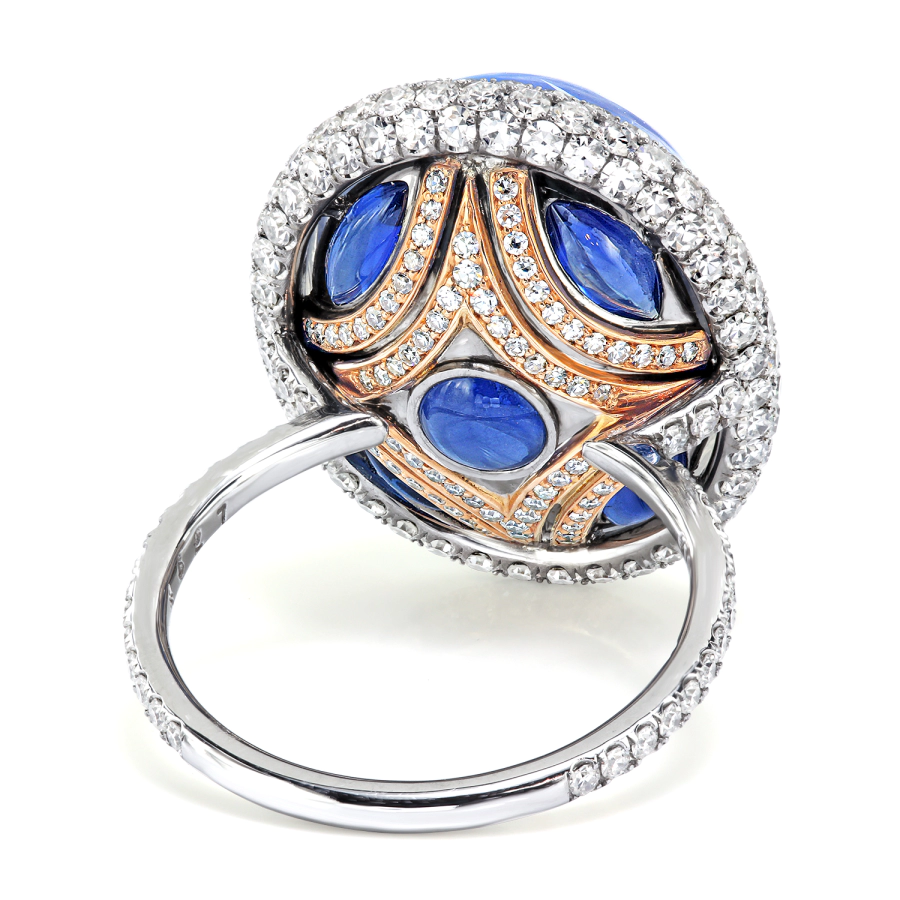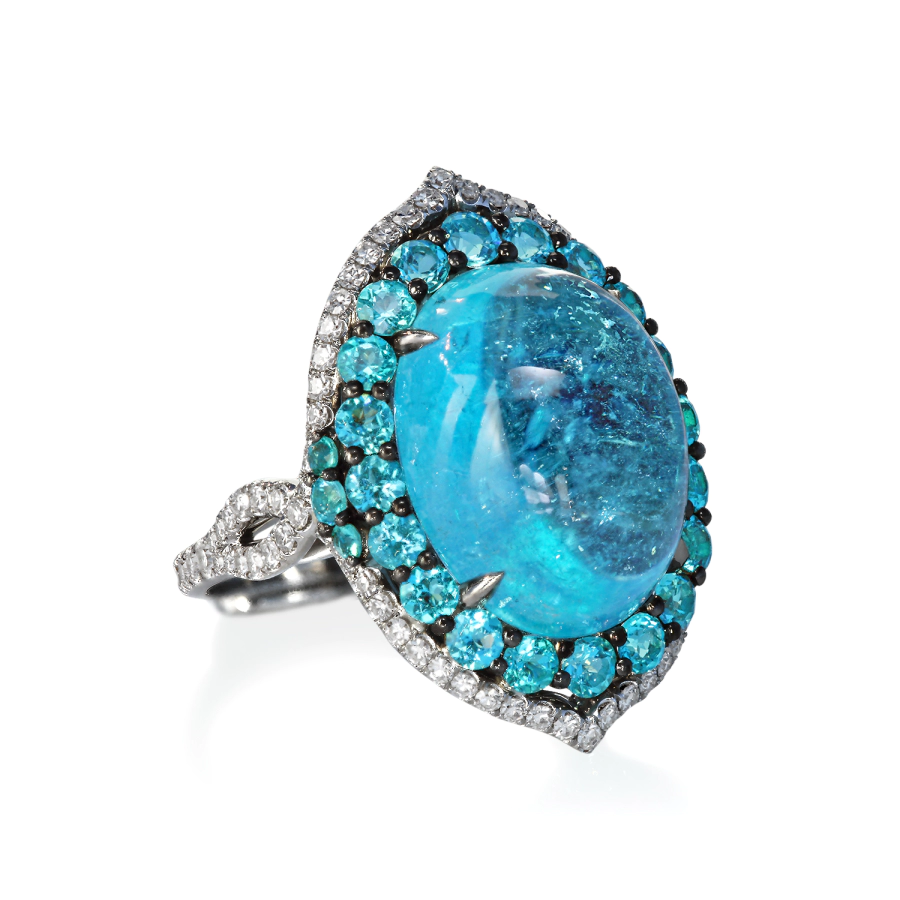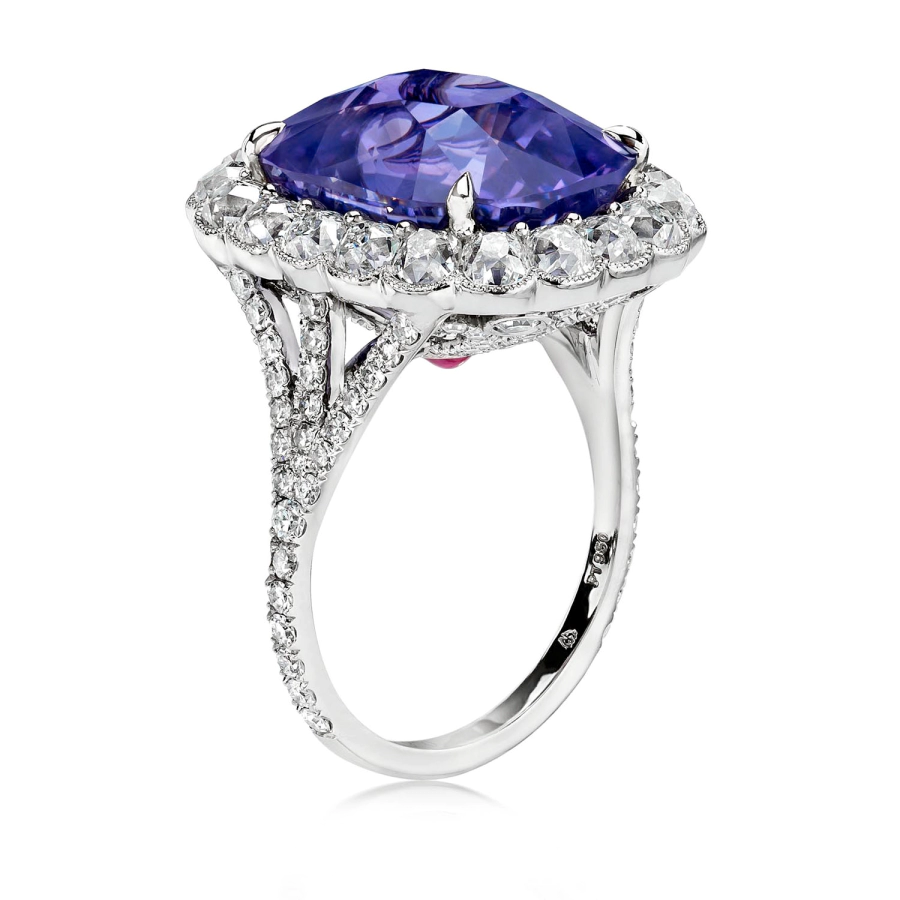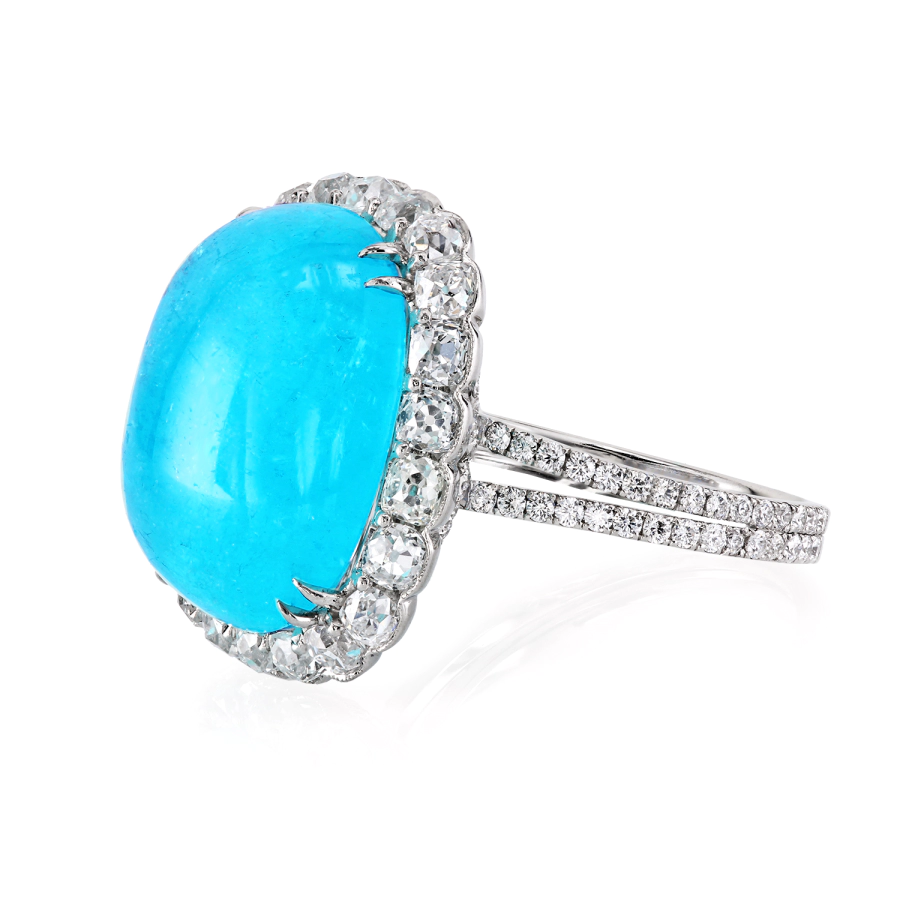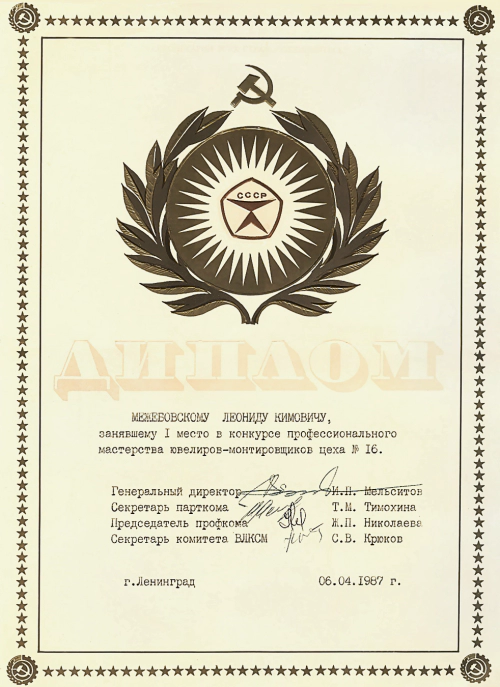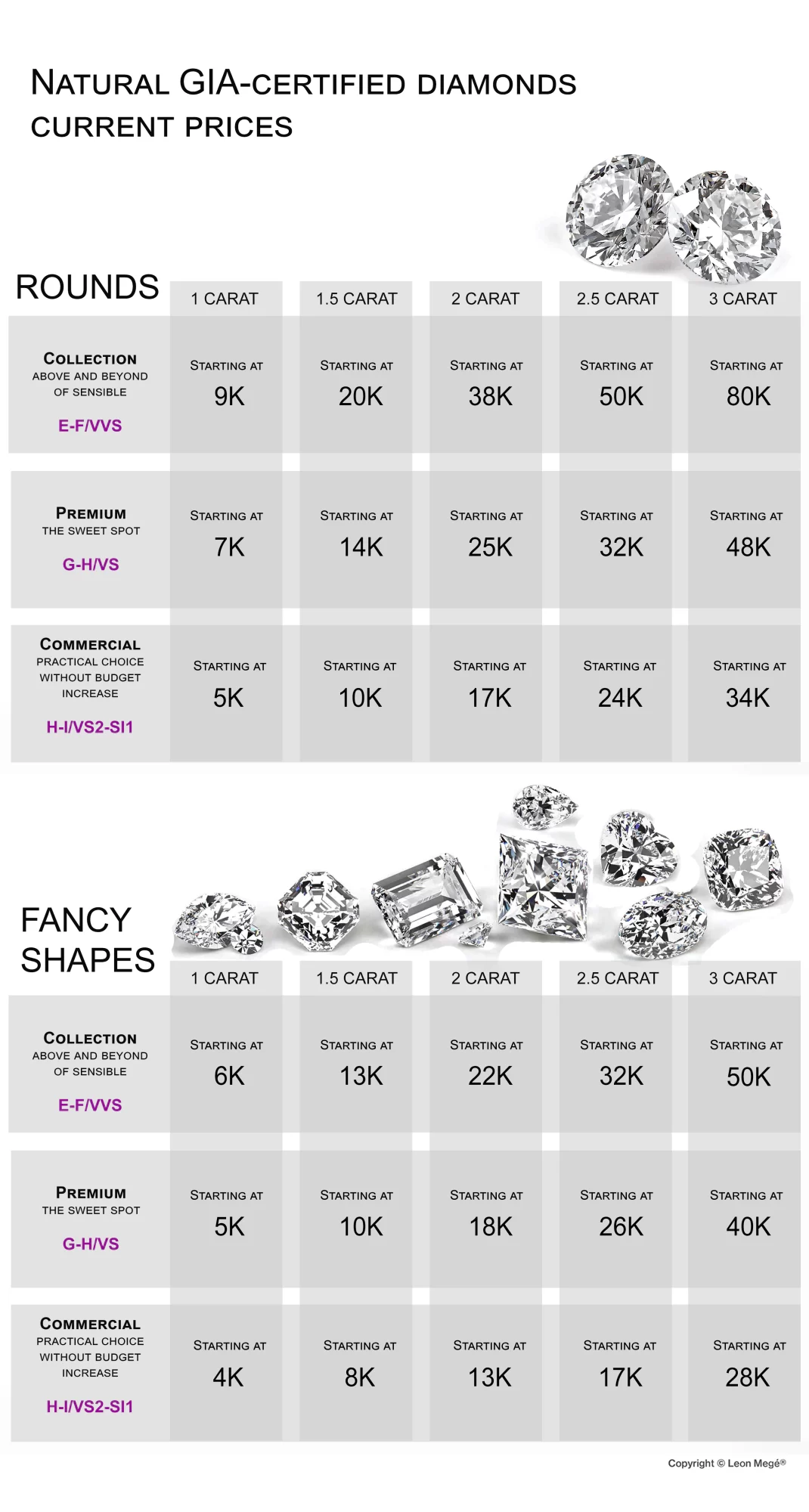“Everything should be made as simple as possible, but not simpler.” – Albert Einstein
- Craftsmanship & Artistry
- Awards
In the luxury market, customers are often courted with chilled flutes of champagne and single malt shots as a reward for their loyalty, while sales associates are required to memorize birthdays and pets’ names. Yet when it comes to Leon Mege, the perennial “IT” in high-end jewelry design, the prospective buyers are the ones doing all of the wooing.
We have over 40 years of experience in making the finest jewelry you will ever find and the knowledge and experience to guide you through the decision process.
We use bench tools to cut, bend, forge, and file the metal stock to create individual parts; each painstakingly formed using only hand tools. Diamonds and gemstones are set under a microscope for precision and safety. Any technology taking the artistry out of the jewelry-making process is banned from our workshop.
Each piece we make is a product of successful collaboration and interaction with a client. There is no competition capable of the same level of craftsmanship and artistry as Leon Mege, with very few exceptions.
From ethical mining to diamond cutting to hand forging, each Leon Mege piece is as important and special as the person wearing it. Our commitment to excellence and dedication to our clients guarantees they won’t be undersold.
Our work is different
Our jewelry is different. Our jewelry is hand-forged, meaning many separate parts are polished to perfection before being assembled into a single finished piece. The crisp transitions between elements can be achieved only when a skilled jeweler puts all parts together. Precision-forged pieces may reveal slight asymmetry, microscopic tool marks, and occasional contrasting joints because they are made by humans. These nuances are intentional and add to the character and finish of the piece.
On the other hand, CAD jewelry has easily detected rough unfinished spots and forced geometry due to casting technology limitations. CAD production compromises the sharpness of the details and joints, introduces irregularities, and blurs the connection points to save time and reduce costs.
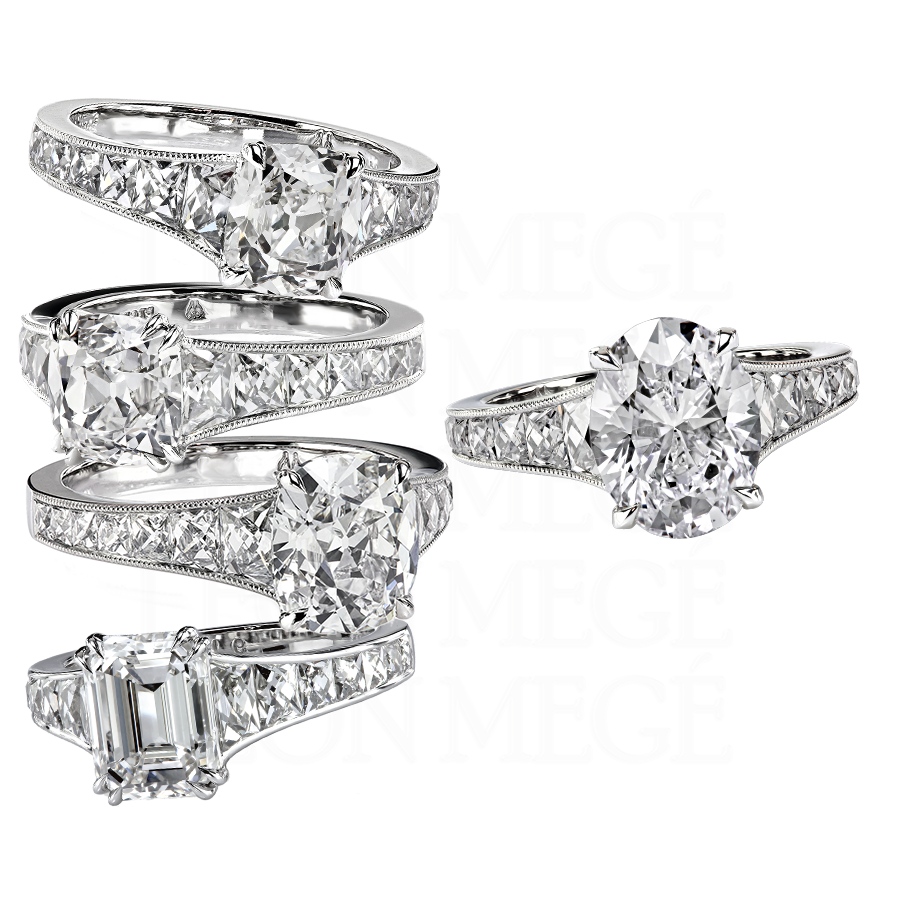
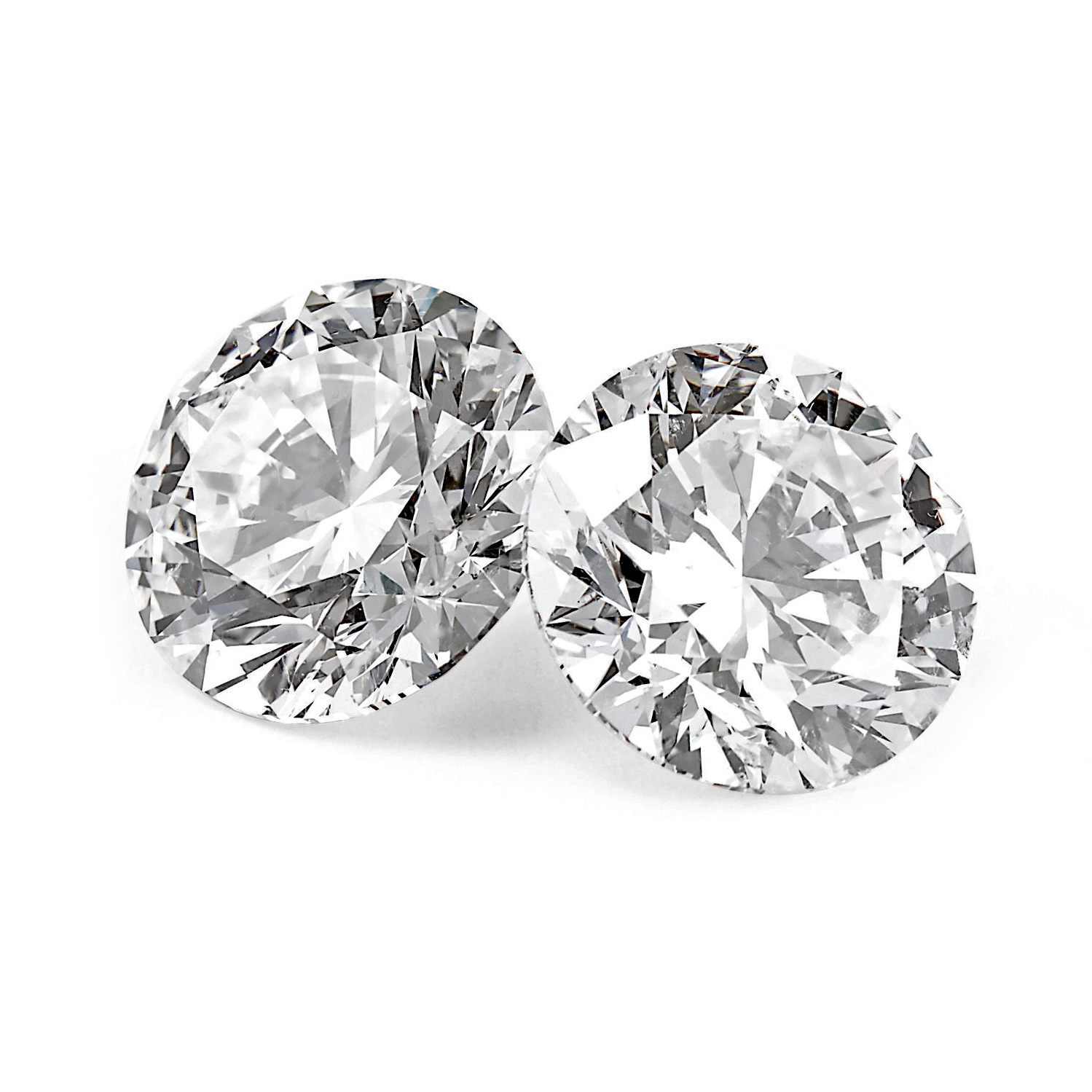
Better diamonds and gemstones
Leon Mege is a professional gemologist who earned a GIA graduate gemologist’s diploma in 1991. The secret to finding the perfect diamond is analyzing the properties and extracting small bits of information that escaped others. Our proprietary methodology allows us to sift through hundreds of diamonds to find the one that stands out by its properties and value.
Precision forging
Hand-forging is the highest form of bespoke craftsmanship used by the finest workshops in the world. The jewelry is made without casting by shaping the raw metal using only hand tools. Each setting is designed around a particular stone to ensure maximum precision and perfect fit. At Leon Mege, we are responsible for the entire manufacturing process. We are a custom workshop where your ring is made-to-order, not plucked from a shelf of molded copies.
We are bespoke jewelers
More than anything, we are known for our bespoke creations. We are working closely to help clients realize a concept they dreamed up. No projects are too big or small, from charming push gifts to important multi-million jewels for collectors. Ultimately, you will have a finely crafted ring with a fine gemstone to treasure for generations.
“Bellflower” ring featuring a 3.28-carat cabochon sapphire accented with diamonds and sapphire. Bespoke micro-pave, custom design in platinum.
“La Petite” bracelet with nine miniature charms featuring Rubies, Aquamarines, Garnets, Amethysts, Sapphires, Tourmalines, and Spinels.
The AGTA Spectrum Awards™ Best of the show is considered the jewelry industry Oscar. It is the most respected and prestigious creative award for the design industry, a benchmark for jewelry designers striving to gain recognition for their work. Winners set the standards of excellence for our entire industry.
Best of the Show Award in the 2015 Spectrum competition.
Captivating 4.71-carat Windex-blue Paraiba cabochon ring.
This remarkable Brazilian Paraiba is incredibly rare and cannot be sourced because all the mines have been exhausted.
An extraordinary right-hand ring with a magnificent 14.65-carat moonstone
As told by MSJA, “The Professional Design Excellence Category celebrates work that exemplifies the best of contemporary jewelry design. The winners show a thorough grounding in the tradition of fine design and an eagerness for experimentation and innovation. By meeting the highest standards of craftsmanship and creativity, these designs truly deserve their award-winning status.”
Custom-made right-hand ring, featuring magnificent blue moonstone set in an elaborate micro pave mounting. Three rows of rounded micro pave halo and three rows of pave on the shank. The stone is cradled in platinum and rose gold patterned cup encrusted with custom-cut sapphire cabochons.
Leon Megé’s 18K gold and sterling silver “Maestro” ring featuring interchangeable records made of ebony wood and gemstones won 2nd place in the Objects of Art Division in the 2014 Spectrum Awards.
This Category is unique and showcases jewelry as artwork that can stand on its own and doesn’t have to be worn to be appreciated.
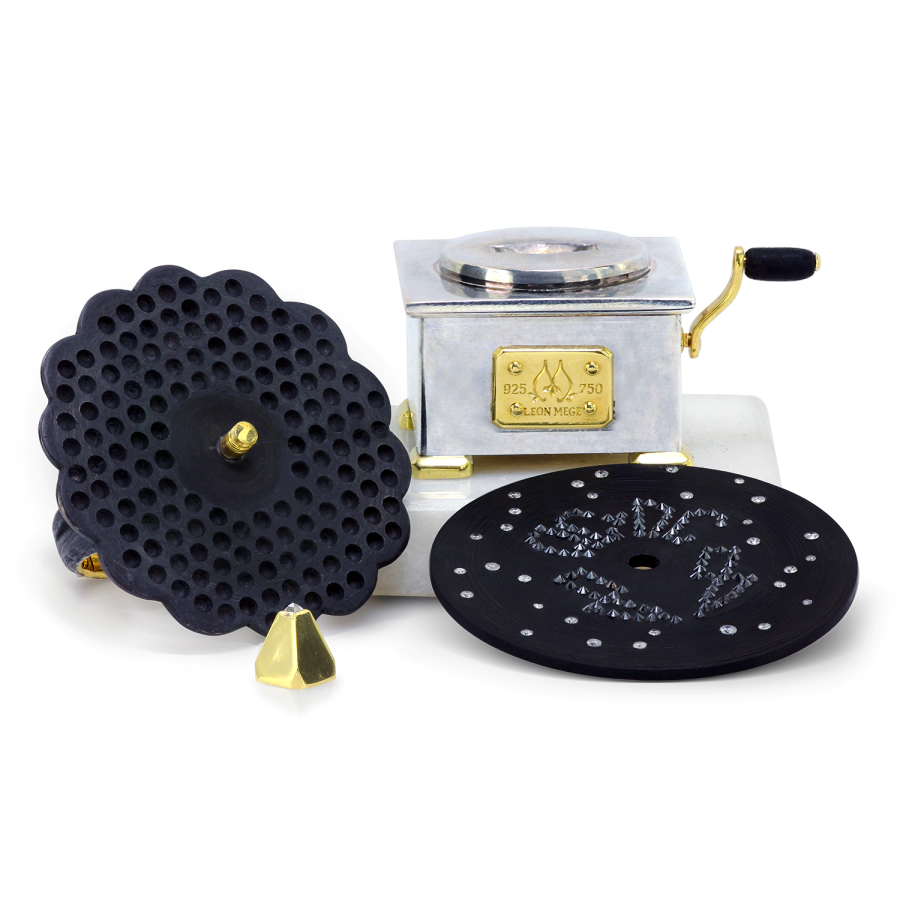
“Blue Fin” right-hand ring featuring electric-blue 12.75 ct. Paraiba tourmaline cab accented with diamonds and small paraibas won 1st Place in the Evening Wear division at the 2014 Spectrum Awards. This design is the epitome of Evening Wear and the Red carpet look.
Leon Megé’s “Maestro” ring is a musical experience translated into jewelry. Handcrafted in sterling silver, 18k gold, and black and white diamonds, the ring features interchangeable records made of black ebony wood and sits upon a base of white Carrera marble with a silver platform in the shape of an old-fashioned gramophone.
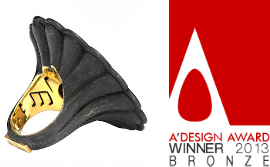
Taking Leon Megé approximately one year to complete, the “Maestro” ring offers a set of jewelry compiled into one piece. The miniature records that accompany the ring are custom-made with gemstones to fit a client’s personal music taste.
The New Talent Design Competition seeks to highlight the best new designers in fine jewelry. The American Jewelry Design Council is a non-profit educational corporation that recognizes and promotes original jewelry design as art. The award is given in recognition of the body of the designer’s work.
The AJDC emphasizes the artistic qualities of jewelry design. Quote: “Essential to every culture, art is the vehicle for expressing emotions and ideas personally and creatively.” The AJDC is a group of more than 30 designers whose mission is to promote the art of jewelry.
In coordination with JA, the annual contest helps present a single outstanding designer to national and international jewelry buyers. Michael Good designed the beautifully made award in Anticlastic raising technique.
The legendary American designer, the late Jose Hess, presented the Award. Hess was the first American president of the CIBJO, an international trade association that created standards for the jewelry industry throughout the world. He was a decorated designer and the winner of numerous design competitions.
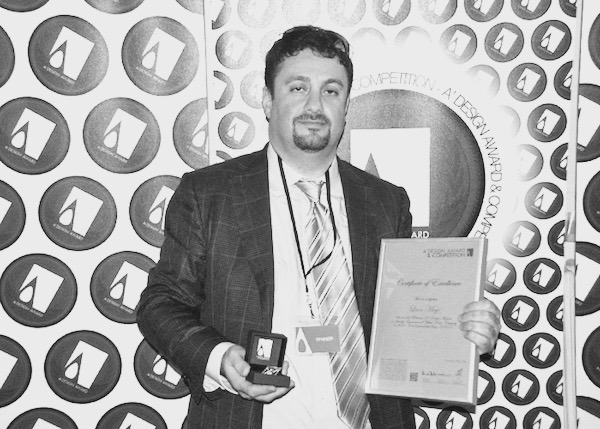 | 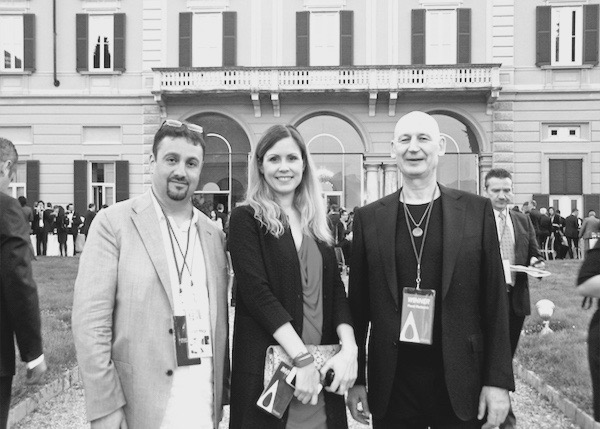 |
The A’Design Jewelry, Eyewear, and Watch Competition highlight the excellent qualifications of best designs, design concepts, and design-oriented products on an international level. The competition honors the best designers in the world.
 | 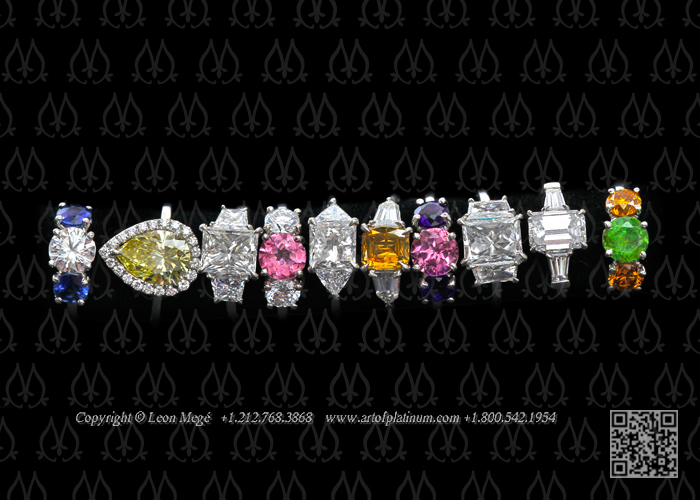 |
The A’Design Award is a badge of excellence in design and solidly proven design quality. The Award ceremony in Como, Italy is a major event for artists and designers worldwide. Winners are showcased on the Design Magazine website that is legendary for launching new names in the world of design.
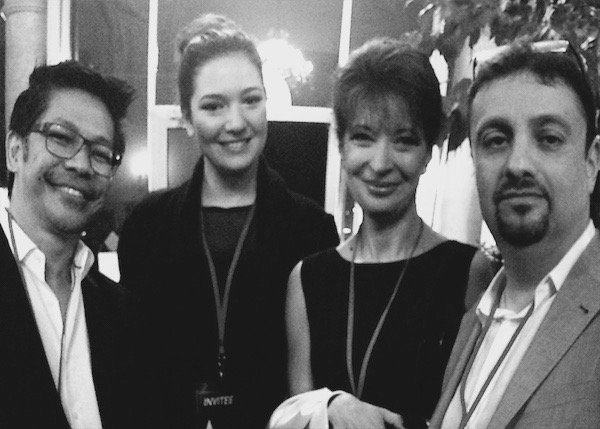 | 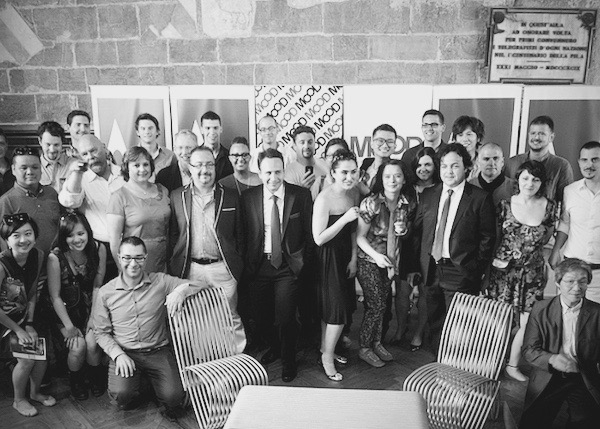 |
The Platinum A’Design Award was awarded for the Leon Mege La Petite collection of miniature ring-like pendants.
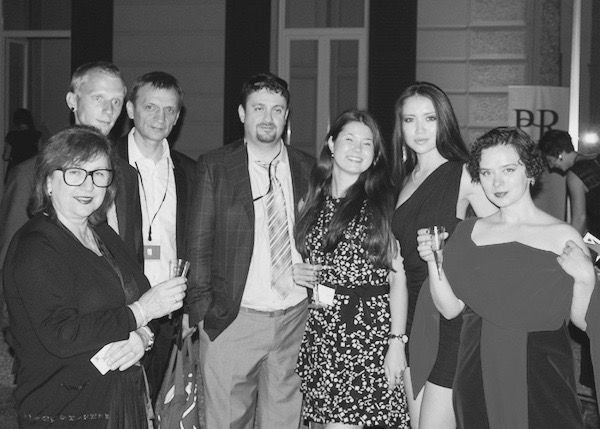 | 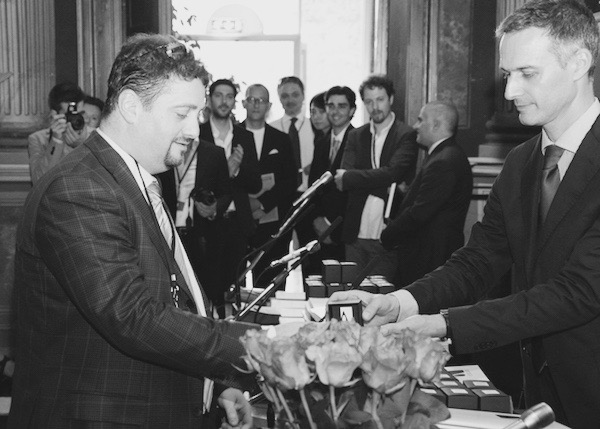 |
Leon Megé’s platinum and silver ring featuring a 2.19 ct. Paraiba Tourmaline, accented with Tourmalines and Diamonds, won 2nd place in the Classical Division at the 2010 Spectrum Awards. The classical Category is defined by superior traditional and timeless designs with a fresh twist for modern-day beauty.